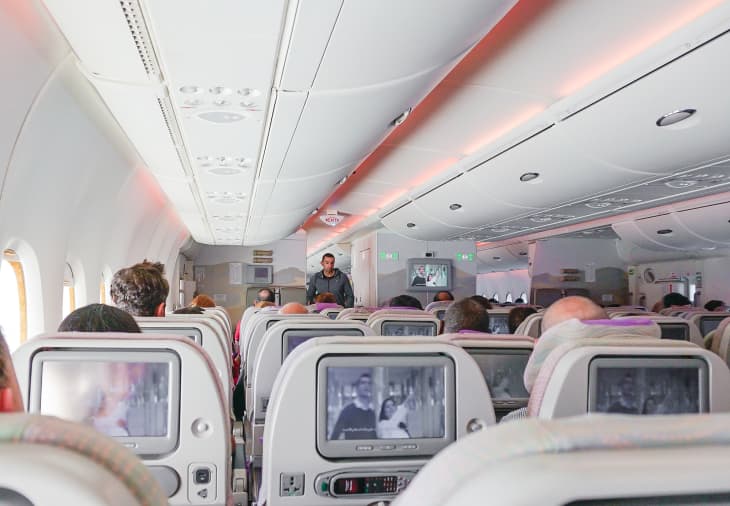A Microbiologist Reveals the 4 Germiest Things on an Airplane

‘Tis the season for travel, which means you may be spending more time than usual inside of airports and airplanes. Unfortunately, it’s also the season for common colds, bugs, the flu, and other germ-induced sicknesses, that’s why it pays to know what kinds of things to avoid (and precautions to take) to bypass any untimely illnesses while traveling for the holidays.
So for advice on germy places to stay away from on a plane, we called on microbiologist Kelly A. Reynolds, PhD and Professor of Public Health at the University of Arizona, for help. We asked her what some of the most bacteria-filled things on an airplane were, as well as tips for staying germ-free when in contact with them.
According to Reynolds, when previously tested for research, the following four airplane items had over 10,000 different kinds of bacteria present:
- The seat itself (“soft fabric surfaces are hard to clean”)
- Armrests
- The seatbelt latch
- The “call” button
“Airplane bathrooms are also very germy,” Reynolds adds, “with lots of people using the same stall over a short period of time. We found traces of the fecal bacteria, E. coli, on faucets and door handles. Part of the problem in airplane bathrooms stems from the tight quarters where contaminants aren’t well dispersed. Not only is it difficult to move around without touching surfaces, the low water faucet pressure makes it difficult to practice good hand washing hygiene.”
How to Avoid Germs on Planes
Not all travel bugs are good ones. Reynolds shared some tips for avoiding germs (and staying clear of colds and other illnesses) on airplanes.
1. Think holistically
“Start with considering a holistic approach to wellness when traveling,” Reynolds says. “Which means not skimping on a good night’s rest, eating well, and drinking lots of fluids to stay hydrated.”
2. Wash your hands
“Hand-washing is your best defense to prevent exposure to stomach and respiratory germs as commonly touched surfaces provide a primary transmission route of exposure.” Reynolds explains: “Surfaces are contaminated by people touching them and also from air droplets laced with bacteria and viruses that rapidly settle on surrounding surfaces.”
3. Stay sanitized
“Hand sanitizer is a good backup product when traveling since soap and water isn’t always readily available.” Reynolds says, “Be sure to sanitize your hands before contacting any food or touching your eyes, nose, or mouth—the entryways for germ infection.”
4. Cover up
“Using toilet paper covers and paper towels to handle toilet seats, lids, faucet taps, and exit doorknobs is also a good practice,” Reynolds says.
5. Wipe down (whenever possible)
“Travel disinfecting wipes can eliminate over 90 percent of germs on tray tables, armrests, call buttons, etc.” Reynolds adds, “Just try to avoid touching the fabric seat, because as I mentioned before, they’re hard to clean and covered in bacteria.”